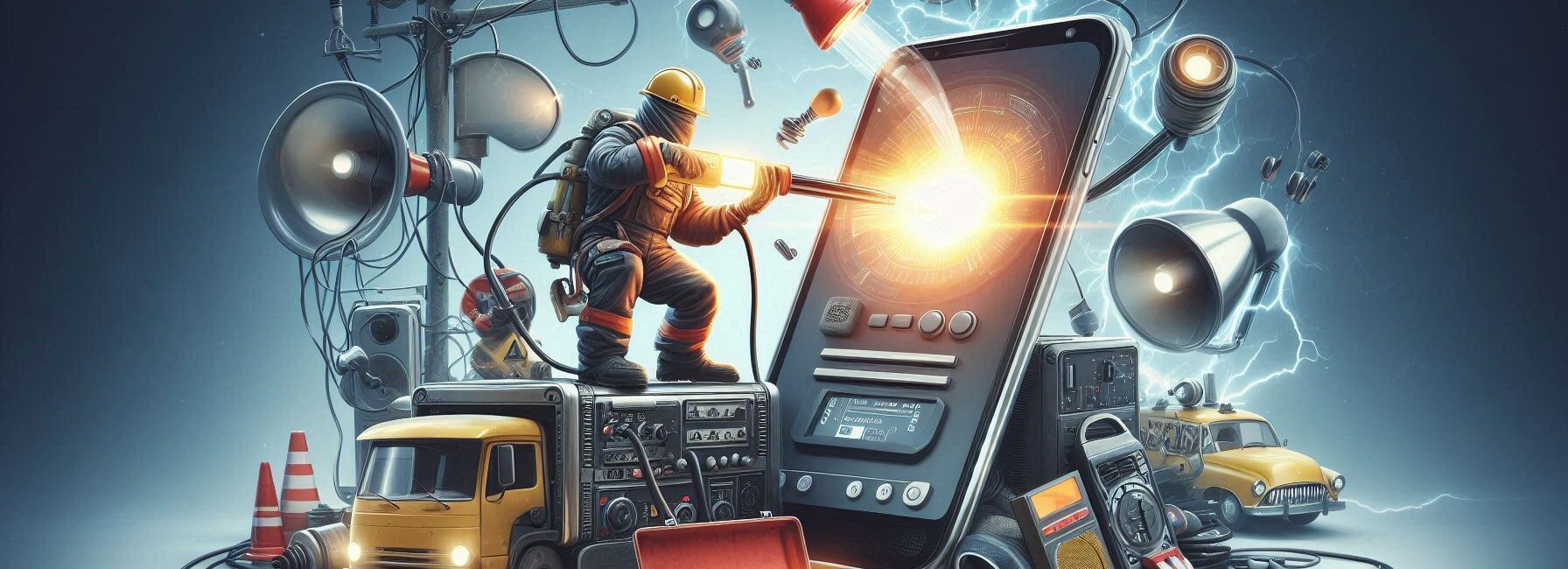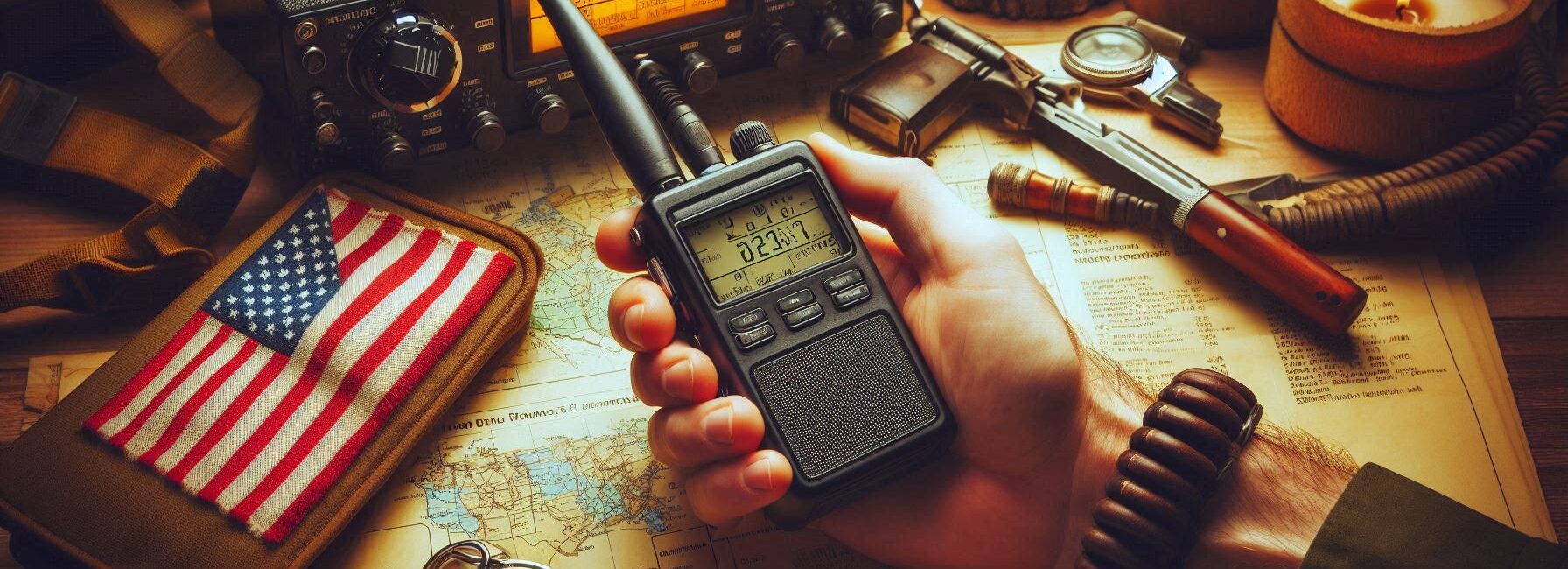Last Updated on November 1, 2025 by Kevin Collier
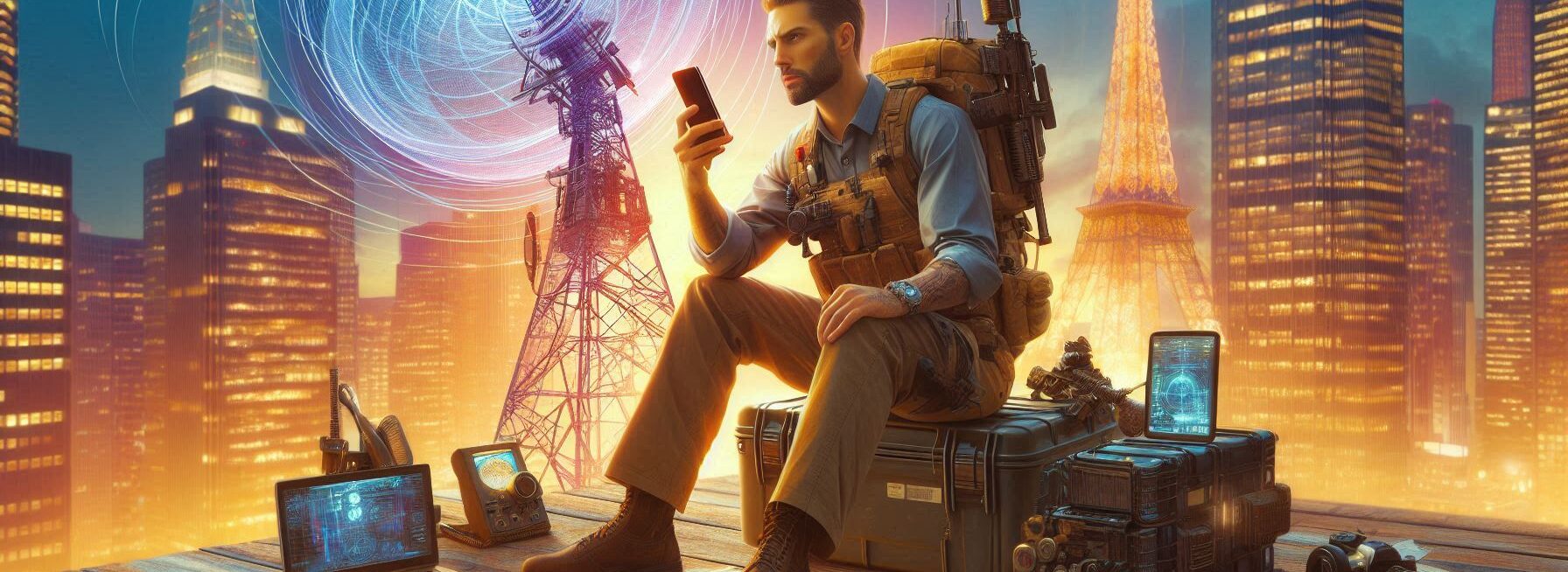
Top Takeaways and Key Concepts
- Establish a 3-3-3 Radio Plan: Set a schedule to check in every 3 hours for 3 minutes on Channel 3.
- Utilize Multiple Radio Bands: Incorporate FRS, GMRS, MURS, and HAM frequencies for diverse communication needs.
- Pre-program Essential Frequencies: Store local emergency, repeater, and distress frequencies in your radio.
- Regularly Test Equipment: Conduct monthly checks to ensure radios and batteries are operational.
- Create a Communication Network: Establish a group protocol for message sending, receiving, and acknowledgment.
Think about this. You are in your backyard, drinking dandelion tea that tastes better than you thought it would. No joke, it's a lot better than it sounds! The world is a little crazy, but you feel safe in your small area full of vegetables and emergency supplies. That's a good idea, right? Your radio, which you can always count on, is next to you, humming.
Please Note: This post may contain affiliate links. If you click one of them, we may receive a commission at no extra cost to you. As an Amazon Associate, I earn from qualifying purchases.
Then you realize it. How do you talk to other survivors without the unpleasant static? It's like trying to listen to your favorite song while someone constantly changing the channel. It's so annoying!
It can feel like magic to make a radio frequency strategy. Think of it as your own code. Start by tuning into a frequency that everyone around you can easily recall. Something catchy, like 101.1, or even better, a fun moniker like “The Dandelion Channel.” When you hear it, you'll smile!
After that, you should specify particular times to check in. Maybe every morning during breakfast or soon after the sun goes down. Everyone feels more connected when things are routine, like telling stories over a campfire with friends.
You can also send short messages. “All clear” says everything is fine, and “Need help!” attracts people's attention right away. Short and sweet keeps things from becoming mixed up.
And what if your radio starts to act strange? That noise can be annoying. Change the dial a little, go around a little, or even try various places outside. The best signal is sometimes only a few inches away.
Don't forget that it's all about staying in touch. You're not the only one in this crazy planet. Those talks and check-ins? They make everything seem a little more normal. So get that radio and start talking. Nothing surpasses sharing a joke or a story, especially when you don't anticipate it. You can do this!
Understanding Radio Basics
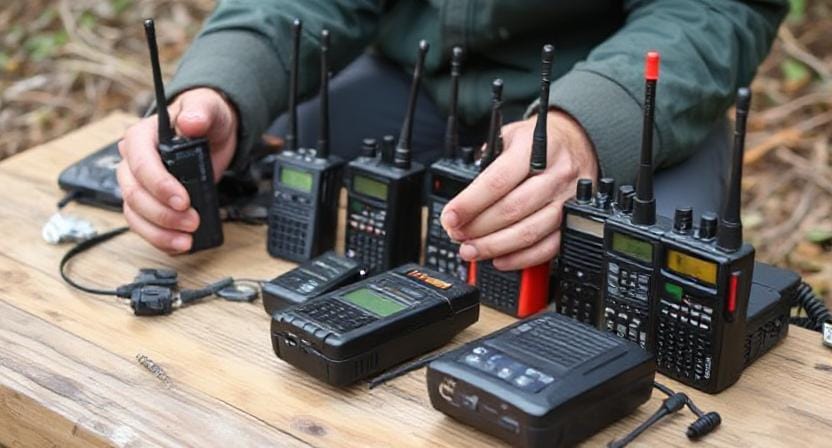
*** Shop for Survival Gear - Tools - Kits ***
Survival Gear - Bags and Backpacks - Knives - Boots/Footwear - Communication
Outdoor Cooking - Gloves - Hydration - Dry Boxes - Water Filtration Systems
Tents - Sleeping Bags - First Aid Kits - Multi-Tools - Flashlights - Fire Starters
Navigation - Survival Food - Night Vision - Headlamps - Stun Guns - Binoculars
Let's take a look at what we're dealing with before we get all high-tech. Radio waves are like invisible messengers that move through the air. They move information from point A to point B faster than I can get away from an enraged raccoon.
1. Types of Radios: There are a lot of different kinds of radios, such as AM/FM radios, two-way radios (like walkie-talkies), and even ham radios that you need a license to use (and maybe a few hours of studying).
They all have various uses. For instance, AM/FM keeps you up to date on the newest news about celebrity dogs during normal times, but two-way radios let you stay in touch when things go wrong.
2. Frequency Bands: Frequencies are split up into bands, which are like lanes on a freeway. Some bands are good for talking to people who are close by, while others can talk to people who are far away.
It's really important to know which band is best for you. If you don't, you might try to call for help on the wrong channel while someone else talks about their favorite cookie recipe!
3. Licensing Requirements: Now here's the kicker: some frequencies need licenses to work lawfully! Before you start sending out messages about how much you miss pizza, make sure you don't require any permits or licenses.
Picking Your Gear
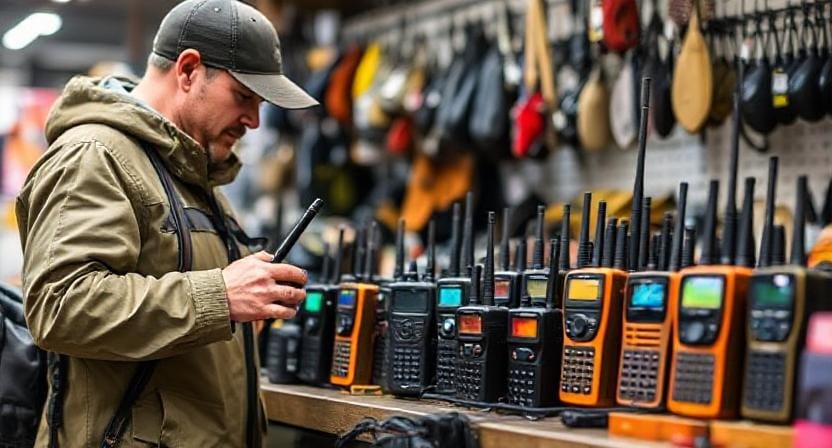
Let's speak about gear now that we've gone over the basics. It's important to have the correct tools because utilizing an old toaster to talk to someone won't work (believe me).
1. Two-way radios: These useful devices let you talk to others right away within a small area. They're great for coordinating with family members in an emergency or hollering at kids who have gone too far into the woods again.
2. Handheld vs. Base Stations: Handheld radios are portable, but base stations have more power and range. However, you need to set them up correctly at home (not next to your stash of old canned beans). Which option is best for you will depend on where you want to utilize them the most.
3. Emergency Crank Radios: These beauties don't need batteries; they may be charged by hand-cranking or by the sun! Think about being able to get some exercise and listen to updates at the same time. You might be saving the world and burning calories at the same time!
Setting Up Rules for Communication
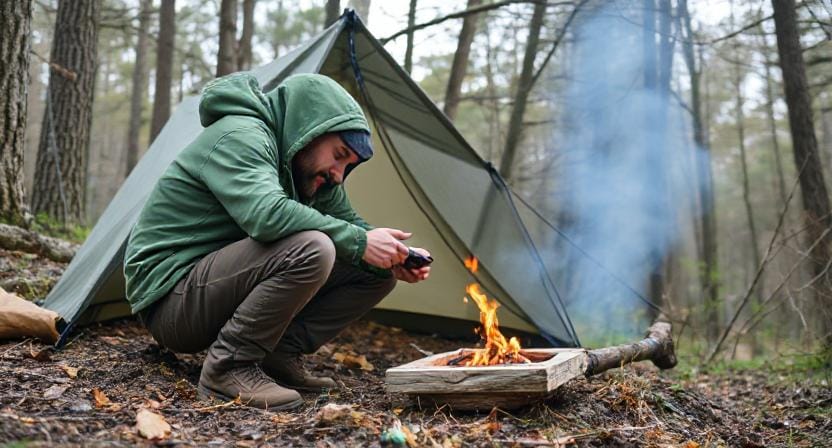
Having fancy tools is useless if no one knows how to use them well! This phase is like making regulations for capture-the-flag, although it's less crazy and a little more crucial.
1. Give Each Person a Call Sign: Give each person in your organization a different call sign. This adds an air of mystery and makes everyone feel like a secret agent. “Agent Pineapple reporting in!” sounds a much cooler than “Hi Mom!”
2. Set Check-In Times: Regular check-ins make sure everyone is still there, and they also offer people a chance to talk about the crazy things that have happened since the last time they saw each other (“You wouldn't believe what happened with my tomato plants!”).
3. Emergency Signals: Create basic codes or signals that show when someone is in trouble or something else that needs to be done right away. You don't need to explain them in detail when things are crazy; a few well-placed beeps can save time when every second counts!
Teaching Everyone Who Is Involved

Now that we have our gear and rules in place, it's time to train! It's not enough to merely know how to push buttons; you also need to know how everything works together.
1. Hold Practice Sessions: Get everyone together on a regular basis and practice utilizing the equipment in different situations, such as thinking there is going to be a zombie invasion or that there is suddenly a lack of chocolate chip cookies (both of which are equally scary).
2. Teach people how to fix things: Give everyone basic troubleshooting skills so they don't have to wonder, “Why isn't my radio working?” when something goes wrong.
3. Stay Up to speed on Changes in Technology: Just like technology changes outside of our survival bubbles (hello smartphones!), new radio technology comes out all the time. Staying up to speed makes sure you're using things that will work for a long time.
Having The Ability To Change And Adapt
Finally, and maybe most crucially, be open to change! The world around us may change quickly, but if we can adapt, our communication plan will work no matter what.
1. Check in on it regularly: Every few months or after big events, take the time to see if your plan still serves your needs or if you need to make changes because of changes in the group or technology.
2. Ask team members for feedback: Keep the lines of communication open about suggestions for improvements from team members. Their ideas could reveal planning gaps that no one else saw!
3. Be ready to change your plans when you need to: Having backup plans available is quite helpful when things change a lot over time, such when natural disasters influence how well signals can be received because of environmental circumstances.
You don't need to be a tech expert to start a radio frequency strategy. It really doesn't take much more than some thought and some chuckles.
Just give it some thought. You want to talk to your friends while you drink your dandelion tea, right? Get those radios or walkie-talkies. It's like a trip.
Choose a pleasant frequency that everyone will remember. How about “Sunny Day Channel” or something like that? That sounds like a happy thing to say. You will all feel like you belong to a club.
Make a schedule for when to check in. Maybe at lunch? Or when the sun goes down? It's a good chance to get together and check how everyone is doing.
And what if the radio starts to buzz or crack? Don't worry! It's part of the enjoyment. Just move it around or wriggle the dial a little bit. It's like a treasure hunt.
Don't take anything too seriously. Joking about who forgot to tune in can make people grin. It's all about having fun, helping one other, and feeling like you belong. In this crazy world, you're all on the same team.
So, get those radios and get going. You should be ready for anything that might happen tomorrow. Let's keep talking about those things! You can do this!
Frequently Asked Questions
What is a 3-3-3 radio plan?
It is a simple check-in method where operators listen or transmit every 3 hours for 3 minutes on channel 3 to maintain periodic coordination.
Why use multiple frequency bands?
Different bands like FRS, GMRS, MURS, and HAM have unique ranges and capabilities, increasing communication reliability during long-term events.
Why pre-program frequencies in advance?
Preloading emergency, repeater, and common-use channels saves time and prevents confusion during stressful high-pressure situations.
How often should survival radios be tested?
Monthly equipment checks help ensure radios, antennas, and spare batteries remain functional before a real emergency occurs.
What is the benefit of group radio protocols?
Shared message formats, acknowledgment wording, and call signs reduce misunderstandings and keep communication efficient across a group network.
Do all radio bands require a license?
Some do. HAM and GMRS require licensing in many regions, while FRS and MURS generally do not for low-power operation.
Can short messages improve survival comms?
Yes. Brief structured messages reduce airtime, conserve battery, and improve clarity in crowded spectrum conditions.
Suggested Resources:
Radio Communications Handbook
https://www.arrl.org/radio-communications-handbook
Emergency Communication Planning Guide
https://www.ready.gov/emergency-communication-planning-guide
Ham Radio License Study Guide
https://www.hamradiolicenseexam.com/study-guide

Kevin Collier is a seasoned survivalist and expert in prepping and homesteading, contributing to WiseSurvive.com. With a deep-rooted passion for self-sufficiency and outdoor survival skills, Kevin shares practical advice, strategies, and resources to help individuals prepare for any challenge. His informative articles cover a range of topics, from essential survival techniques to sustainable living practices, empowering readers to thrive in any situation. Whether you're a novice or a seasoned prepper, Kevin's insights will inspire you to take charge of your readiness and build resilience for the future.

